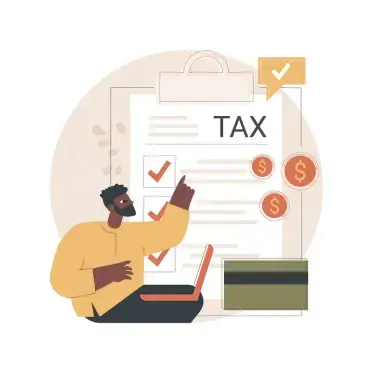














 Agriculture Garden & Landscape
Agriculture Garden & Landscape
 Power Tools
Power Tools
 IT & Electronics
IT & Electronics
.png) Cleaning
Cleaning
 Office Supplies
Office Supplies
 Material Handling & Packaging
Material Handling & Packaging
 Electrical
Electrical
 Furniture Hospitality & Food Service
Furniture Hospitality & Food Service
 Pumps
Pumps
 Hand Tools
Hand Tools
A credit note is issued by the seller or supplier of goods/services if they raised an invoice charging the customer more than the actual amount. After issuing a credit note, the customer may not need to pay the total amount mentioned in the invoice. It is primarily a corrigendum for any mistakes in billing made by the seller. On the other hand, the supplier raises a GST invoice for a successful transaction of goods or services. The recipient of the service or goods shall pay the entire amount if the amount is correct.
GST rates vary based on the type of goods and services. There are four main GST rates: 5%, 12%, 18%, and 28%. Some goods and services are exempt from GST, while others might attract a special rate.
Businesses with an annual turnover exceeding the prescribed threshold limit (currently Rs. 40 lakhs for most states) must register for GST. For certain special category states and specific businesses, the threshold is Rs. 20 lakhs.
E-commerce operators and sellers on e-commerce platforms need to comply with GST regulations. The e-commerce operator is required to collect and remit TCS (Tax Collected at Source), and sellers need to ensure proper invoicing and compliance.
GST registration can be done online through the GST portal by providing necessary details and documents. The process involves obtaining a unique GSTIN (Goods and Services Tax Identification Number).
Input Tax Credit allows businesses to claim credit for the GST paid on purchases against the GST liability on sales. It prevents the cascading effect of taxes and reduces the overall tax burden.
GST returns are filed monthly, quarterly, or annually based on the business's turnover. GSTR-3B is a monthly return, while GSTR-1 and GSTR-9 are filed quarterly and annually.
Yes, there are penalties for late filing of GST returns, incorrect filings, or non-compliance. Penalties can include fines and interest on outstanding tax liability.
The GST regulations require that invoice serial numbers be kept up to date for a whole year.
A GST Invoice Badge ensures that the item complies with GST. It denotes that for the sale of that product, the vendor will generate a GST invoice.